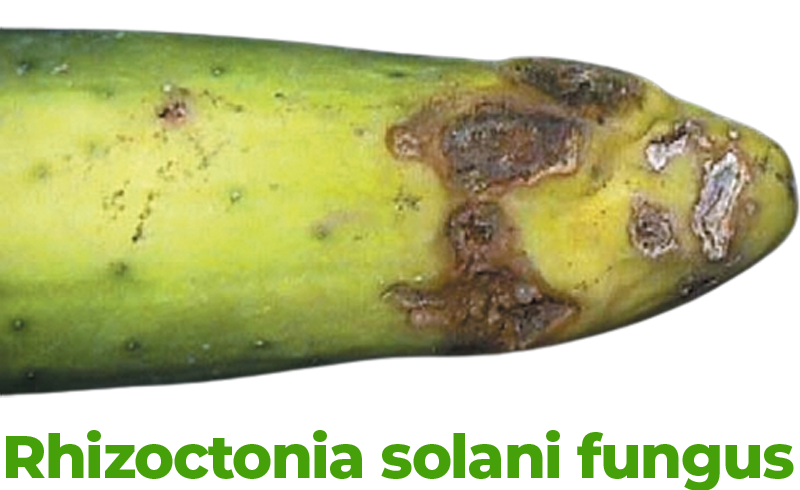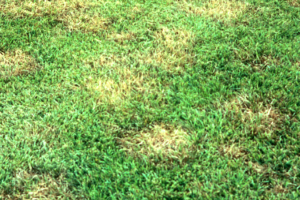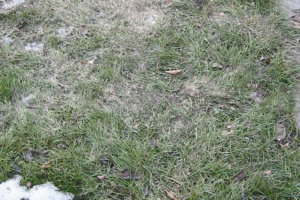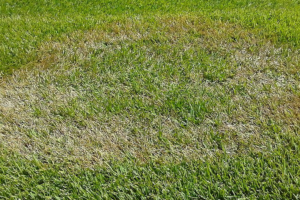
Introduction
A brief overview of the topic
Lawn fungus is a common problem many homeowners face, but it’s often overlooked or misunderstood. These fungi are naturally present in the soil and can become problematic when conditions favor their growth. This can lead to unsightly patches on your lawn, and in severe cases, it can cause significant damage to your grass. Understanding lawn fungus and how to treat it is essential for maintaining a healthy, vibrant lawn.
Importance of lawn fungus treatment
Treating lawn fungus is about more than just maintaining the aesthetic appeal of your yard. A healthy lawn plays a crucial role in the ecosystem by preventing soil erosion, reducing heat, and improving air and water quality. Furthermore, a well-maintained lawn can increase the value of your property. Therefore, addressing lawn fungus issues promptly and effectively is essential to protect these benefits.
Preview of what this post will cover
This comprehensive guide will delve into everything you need about lawn fungus treatment. We’ll start by helping you understand what lawn fungus is and the different types that can affect your lawn. Then, we’ll guide you on identifying signs of lawn fungus and discuss the various prevention strategies. We’ll also explore various treatment options, from chemical treatments to organic and DIY remedies. Finally, we’ll walk you through the recovery process after treatment and answer some frequently asked questions about lawn fungus treatment. Whether you’re currently dealing with a lawn fungus problem or want to be prepared, this guide covers you.
Understanding Lawn Fungus
Explanation of what lawn fungus is
Lawn fungus, or turf disease, is a group of diseases caused by various fungi that thrive in certain conditions. These microscopic organisms live in the soil and can infect your lawn when the environment is conducive. Fungal diseases can spread rapidly and cause significant damage to your lawn if left untreated.
It’s important to note that not all fungi are harmful. Many fungi are crucial in breaking down organic matter and returning nutrients to the soil. However, when harmful fungi increase, they can cause various lawn diseases that can be difficult to control.
Different types of lawn fungus
- Brown patch: The brown patch is a common lawn disease caused by the Rhizoctonia species of fungus. It’s characterized by large, irregularly shaped brown, dead grass patches. This disease is most prevalent in warm, humid weather and affects various grass types.
- Dollar spot: Dollar spot gets its name from the silver-dollar-sized patches of straw-colored, dead grass it causes. The Sclerotinia homeocarpa fungus causes this disease and is most common in lawns with low nitrogen levels, high humidity, and warm temperatures.
- Fairy ring: Fairy ring is a unique type of lawn fungus that forms circular patterns of dark green, fast-growing grass. In some cases, mushrooms may grow along the ring. A variety of fungi causes this disease and can occur in almost any type of soil and weather conditions.
- Fusarium blight: Also known as snow mold, the Fusarium species of fungus cause Fusarium blight. It’s characterized by circular patches of dead grass ranging from a few inches to a few feet in diameter. This disease is most common in cool, wet weather and lawns with poor drainage.
- Powdery mildew: Powdery mildew is a lawn disease that causes a white, powdery substance to appear on the blades of grass. Several fungi cause it, most common in shady areas and cool, damp weather.
- Red thread: Red thread is a lawn disease characterized by red or pink threads that appear on the blades of grass. The Laetisaria fuciformis fungus causes it and is most common in cool, wet weather and lawns with low nitrogen levels.
Causes of lawn fungus
An imbalance between the grass, the environment, and the pathogen primarily causes lawn fungus. When conditions are favorable for the growth of the fungus (such as high humidity, excessive rainfall, or improper watering), and the grass is susceptible (due to stress from drought, improper mowing, or nutrient deficiency), lawn fungus can thrive.
It’s also important to note that lawn fungus spores are always in the soil. They can be spread by wind, water, animals, and even lawn care equipment. Once the spores find a suitable environment, they can germinate and infect the grass.
The impact of lawn fungus on your yard
The impact of lawn fungus can range from minor cosmetic issues to severe damage that requires reseeding or sodding. At the very least, lawn fungus can create unsightly patches that detract from the overall appearance of your lawn. In severe cases, lawn fungus can kill the grass and create bare spots.
Beyond the visual impact, lawn fungus can also affect the health of your lawn. Infected grass may be more susceptible to other diseases and pests, and the damage can make it harder to withstand environmental stress. In short, lawn fungus can pose a significant threat to the health and beauty of your lawn.
Identifying Lawn Fungus
Signs and symptoms of lawn fungus
Identifying lawn fungus early is crucial to preventing extensive damage to your lawn. The signs of lawn fungus can vary depending on the type of fungus, but there are some common symptoms to look out for. These include patches of discolored or dying grass, unusual growth patterns (such as rings or spots), and the presence of visible fungi, such as mushrooms or a powdery substance on the grass blades.
It’s important to note that not all discolored or dying grass is due to fungus. Other issues, such as pests, nutrient deficiencies, or environmental stress, can cause similar symptoms. Therefore, it’s crucial to accurately identify the cause of the problem before attempting any treatment.
How to correctly diagnose lawn fungus
Diagnosing lawn fungus can be challenging due to various diseases and their similar symptoms. However, carefully examining the affected area and understanding the conditions favoring different fungus types can help. Look for patterns in the grass discoloration, visible fungus, and grass texture or growth changes.
It’s also helpful to consider the environmental conditions. Have there been changes in the weather, such as increased rainfall or humidity? Have you changed your lawn care practices, such as watering or mowing? These factors can provide clues to the type of fungus affecting your lawn.
Prevention of Lawn Fungus
Proper lawn care practices
- Watering: Proper watering is crucial for preventing lawn fungus. Overwatering can create a damp environment that encourages fungal growth, while underwatering can stress the grass and make it more susceptible to disease. Aim to water your lawn deeply but infrequently, allowing the top inch of soil to dry out between waterings. It’s also best to water in the early morning, which allows the grass to dry out during the day and reduces the likelihood of fungal growth.
- Mowing: Regular mowing can help prevent lawn fungus by keeping the grass at a healthy length and promoting air circulation. However, mowing too short can stress the grass and make it more susceptible to disease. Aim to keep your grass at a height of about 3 inches, and keep your mower blades sharp to avoid damaging the grass.
- Fertilizing: Proper fertilization can help prevent lawn fungus by promoting healthy grass growth. However, over-fertilization can contribute to fungal growth by creating excessive thatch and promoting lush growth that’s more susceptible to disease. It’s essential to use the right fertilizer for your grass and apply it at the correct times of the year.
Importance of soil testing
Soil testing is an often overlooked but essential part of preventing lawn fungus. A soil test can reveal your soil’s pH level and nutrient content, which can help you tailor your lawn care practices to your specific lawn. For example, if your soil is deficient in specific nutrients, you can choose a fertilizer that contains those nutrients to promote healthy grass growth. Similarly, if your soil is overly acidic or alkaline, you can adjust the pH and create a more favorable environment for your grass.
Selecting the right grass type for your region
Different types of grass thrive in different conditions, and choosing the suitable grass for your region can help prevent lawn fungus. For example, some types of grass are more resistant to certain fungal diseases, while others are better suited to your area’s temperature and rainfall patterns. If you’re planting a new lawn or considering reseeding, researching the best grass types for your region is worth researching.
Seasonal care and maintenance
Seasonal care and maintenance can also help prevent lawn fungus. This includes aerating your lawn in the spring or fall to improve soil drainage, reduce thatch, and raking up leaves to prevent them from smothering the grass and creating a damp environment that encourages fungal growth. It’s also essential to monitor your lawn for signs of disease throughout the year, as some types of lawn fungus are more common in certain seasons.
What Treatments Are Available For Lawn Fungus?
Overview of treatment options
Once you’ve identified a fungal disease in your lawn, it’s important to act quickly to prevent further damage. Several treatment options are available, from chemical fungicides to organic alternatives and DIY remedies. The best option for you depends on the fungus type, the infection’s severity, and your preferences.
Keep in mind that treatment is only one part of managing lawn fungus. It’s also essential to address the underlying conditions that led to the outbreak, such as improper watering or fertilization practices. Combining treatment with preventative measures can cure the current infection and reduce the likelihood of future outbreaks.
Chemical treatments
- How they work: Chemical fungicides kill the fungus or inhibit its growth. They can effectively control lawn fungus, but they should be used as a last resort due to their potential impact on the environment and non-target organisms. When using a chemical fungicide, following the manufacturer’s instructions carefully is important to ensure effective and safe use.
- Pros and cons: The main advantage of chemical fungicides is their effectiveness. They can often control a fungal outbreak more wholly and quickly than other methods. However, they also have downsides. They can harm beneficial organisms in your lawn, and some fungi can develop resistance to them over time. They can also be more expensive than other treatment options.
- Safety considerations: When using chemical fungicides, it’s essential to take safety precautions to protect yourself and the environment. This includes wearing protective clothing, avoiding application on windy days to prevent drift, and storing the fungicide properly to prevent accidental ingestion by children or pets.
Organic treatments
- How they work: Organic treatments for lawn fungus work in various ways. Some, like compost tea or certain types of bacteria and fungi, work by out-competing the harmful fungus for resources. Others, like neem oil or baking soda, have natural antifungal properties.
- Pros and cons: The main advantage of organic treatments is that they are generally safer for the environment and non-target organisms than chemical fungicides. They can also improve the overall health of your lawn by adding beneficial organisms or nutrients. However, they may not be as immediately effective as chemical treatments and require more frequent application.
DIY home remedies for lawn fungus
Some homeowners opt for DIY home remedies for lawn fungus. These can include things like vinegar, baking soda, or dish soap. While these remedies can sometimes help with minor fungal issues, they are generally less effective than commercial treatments. They can also potentially harm your lawn if misused.
When to call a professional
If your lawn fungus problem is severe or persistent, it may be time to call in a professional. Lawn care professionals have access to commercial-grade products and equipment and the expertise to effectively diagnose and treat lawn fungus. They can also provide advice on how to prevent future outbreaks. While hiring a professional can be more expensive than treating the problem yourself, it can save you time and frustration in the long run.
Lawn Recovery After Treatment
What to expect after treatment
After treating your lawn for fungus, you should start to see improvements within a few weeks. The discolored or dead patches should begin to recover, and new, healthy grass should grow. However, the exact timeline will depend on the severity of the infection and the type of treatment used.
It’s essential to continue monitoring your lawn after treatment. Some types of fungus can persist in the soil and re-infect the grass, primarily if the conditions that led to the outbreak are not addressed. If you notice signs of the fungus returning, you may need to reapply the treatment or consider a different treatment option.
Post-treatment lawn care
Proper lawn care is crucial for helping your lawn recover after a fungal infection and preventing future outbreaks. This includes watering properly, mowing at the right height, and fertilizing appropriately. You should also continue to monitor your lawn for signs of fungus and take action at the first sign of trouble.
If the fungus severely damages your lawn, you might need to take additional steps to restore it. This could include reseeding or sodding bare patches, aerating to improve soil structure and drainage, or applying a top dressing to improve soil quality. Sometimes, you may need to consider a more drastic solution, such as replacing your lawn with a more disease-resistant grass type or redesigning your landscape to improve drainage and reduce shade.
Monitoring for recurrence
Even after successful treatment, keeping a close eye on your lawn for signs of recurring fungal disease is essential. Remember, fungal spores are always present in the environment and can easily re-infect your lawn if favorable conditions are favorable. Regular monitoring can help you catch any new outbreaks early before they have a chance to cause significant damage.
Regular soil testing can also help monitor your lawn’s health and prevent fungal disease. By keeping track of your soil’s nutrient levels and pH, you can make informed decisions about watering, fertilizing, and other lawn care practices. This proactive approach can help you maintain a healthy, vibrant lawn resistant to fungal disease.
Case Study: Successful Lawn Fungus Treatment
Overview of the case
To illustrate the process of diagnosing and treating lawn fungus, let’s consider a case study. In this scenario, a homeowner noticed irregular brown patches on their lawn during the hot, humid summer months. The patches seemed to grow larger over time, and the grass within these patches appeared wilted and brown, despite regular watering.
The homeowner initially tried adjusting their watering schedule and applying a general-purpose lawn fertilizer, thinking the problem might be due to drought stress or nutrient deficiency. However, the problem persisted, indicating that it was likely due to a lawn disease rather than a simple care issue.
Steps were taken for treatment.
The homeowner decided to take a sample of the affected lawn to a local extension service for diagnosis. The extension service confirmed that the lawn suffered from brown patches, a common type of lawn fungus that thrives in hot, humid conditions.
Following the extension service’s recommendations, the homeowner applied a fungicide to treat brown patches. They also took steps to improve their lawn care practices, such as watering in the early morning to minimize humidity around the grass blades and mowing at a higher setting to reduce stress on the grass.
Over the next few weeks, the homeowner continued to monitor the lawn closely and reapply the fungicide as directed. They also arranged for a soil test to check for any underlying issues that might make the lawn susceptible to disease.
Results and lessons learned.
After several weeks of treatment, the brown patches on the lawn began to recover. New, healthy grass started to grow in the affected areas, and the overall appearance of the lawn improved significantly. The soil test revealed that the lawn was slightly low in nitrogen, which could have contributed to the disease outbreak. The homeowner decided to adjust their fertilization schedule to address this issue.
This case study illustrates the importance of accurate diagnosis and targeted treatment in managing lawn fungus. By seeking professional help and taking a proactive approach to lawn care, the homeowner was able to save their lawn from a severe fungal disease. It also highlights the importance of regular monitoring and soil testing in preventing lawn disease and maintaining a healthy lawn.
Case Study: Leaf Spot and Melting-Out Diseases
The Penn State Extension studied leaf spot and melting-out diseases, common types of lawn fungus. The study found that fungicides can effectively control these diseases, but the application and product selection timing is critical. Preventative fungicide applications or applications in the early stages of disease development provide the best results.
This case study underscores the importance of early detection and treatment in managing lawn fungus. By applying the proper fungicide at the right time, homeowners can prevent these diseases from causing significant damage to their lawns.
Case Study: Lawn and Turfgrass Diseases
Another study from Penn State Extension examined various fungal diseases that can attack turfgrasses and lawns, including brown patches and silvery thread moss. The study found that most lawn fungus issues can be effectively managed with the right treatment strategies.
This study highlights the diversity of fungal diseases affecting lawns and the importance of tailored treatment strategies. Homeowners can choose the most effective treatment and prevent further outbreaks by understanding the fungus affecting their lawns.
While these case studies provide valuable insights into lawn fungus treatment, they may only cover some types of lawn fungus or all possible treatment strategies. Always consult a lawn care professional or local extension service for advice tailored to your situation.
Frequently Asked Questions
What causes lawn fungus?
Various factors cause lawn fungus, but it often involves an imbalance between the grass, the environment, and the pathogen. Fungal spores are always present in the soil and can germinate and infect the grass when favorable conditions are favorable. This includes high humidity, excessive rainfall, or improper watering. Additionally, if the grass is stressed due to drought, improper mowing, or nutrient deficiency, it can be more susceptible to fungal diseases.
It’s also worth noting that lawn fungus can be spread in several ways. This includes wind, water, animals, and even lawn care equipment. Once the spores find a suitable environment, they can quickly multiply and cause damage to your lawn.
How can I prevent lawn fungus?
Preventing lawn fungus involves a combination of proper lawn care practices and monitoring. Regular watering, mowing, and fertilizing can help maintain the health of your grass and make it less susceptible to fungal diseases. It’s also important to monitor your lawn for signs of fungus and take action at the first sign of trouble.
Soil testing can also be a valuable tool for preventing lawn fungus. By understanding your soil’s nutrient content and pH, you can tailor your lawn care practices to your specific lawn. Additionally, choosing the right type of grass for your region can help prevent lawn fungus, as some types of grass are more resistant to certain fungal diseases.
How do I treat lawn fungus?
Treatment for lawn fungus depends on the type of fungus and the severity of the infection. In many cases, a fungicide can be effective in controlling the disease. However, choosing a fungicide to treat the specific fungus affecting your lawn is essential. In addition to applying a fungicide, you should address any underlying conditions that may have contributed to the outbreak, such as improper watering or fertilization.
If your lawn fungus problem is severe or persistent, it may be time to call in a professional. Lawn care professionals have the expertise to diagnose and treat lawn fungus effectively. They can also provide advice on how to prevent future outbreaks.
Can lawn fungus spread to other plants?
Some types of lawn fungus can spread to other plants, especially if those plants are closely related to grasses. However, many lawn fungi are specific to grasses and are unlikely to infect other types of plants. That being said, if you notice signs of fungal disease on other plants in your yard, it’s a good idea to get a diagnosis to determine the cause and appropriate treatment.
It’s also worth noting that the spores of lawn fungi can be spread in several ways, including wind, water, and lawn care equipment. Therefore, cleaning your equipment regularly and taking other preventative measures to prevent the spread of lawn fungus is essential.
Conclusion
Lawn fungus is a common problem that can cause significant damage to your lawn if left untreated. However, you can effectively manage this issue with the proper knowledge and tools. This guide has provided an in-depth look at lawn fungus, including what it is, how to identify it, and how to prevent and treat it. We’ve also explored some case studies and answered frequently asked questions about lawn fungus.
Remember, the key to managing lawn fungus is early detection and treatment. You can keep your lawn healthy and vibrant by monitoring your lawn regularly and taking action at the first sign of trouble.
Encouragement
Dealing with lawn fungus can be challenging, but don’t be discouraged. You can overcome this issue with patience, persistence, and the right approach and maintain a beautiful lawn. Whether you’re currently dealing with a lawn fungus problem or want to be prepared, remember you have the resources and support you need to succeed.
Final thoughts
Lawn care is a journey, not a destination. There will always be challenges and obstacles, but each is an opportunity to learn and grow. So, keep learning, experimenting, and most importantly, enjoying your lawn. After all, a healthy, beautiful lawn is worth the effort.
If you found this guide helpful, please share it with others who might benefit. And if you have any questions or comments, don’t hesitate to reach out. We’re always here to help you with your lawn care needs.
Resources:
- The Lawn Institute
- American Phytopathological Society
- University Extension Services – Many universities have extension services that provide resources and research on lawn care and diseases.
- Turfgrass Science Division of the Crop Science Society of America
You can search for “lawn fungus” or specific types of lawn fungus on these sites to find relevant articles and case studies.

Bob Green, a passionate lawn care enthusiast with over two decades of landscaping experience, is this website’s proud owner. His vast knowledge of horticulture and dedication to helping homeowners maintain beautiful lawns are reflected in the valuable content he shares on his platform. John has always been interested in Agrostology.












